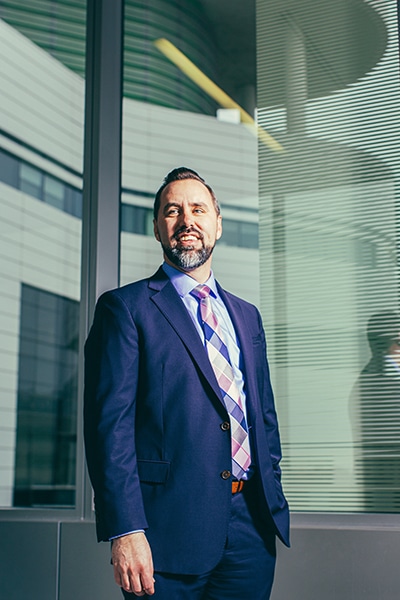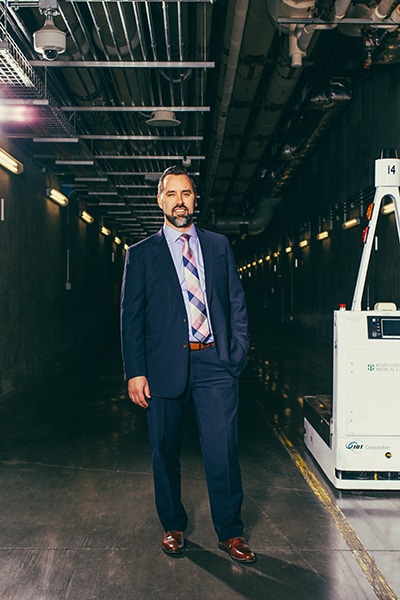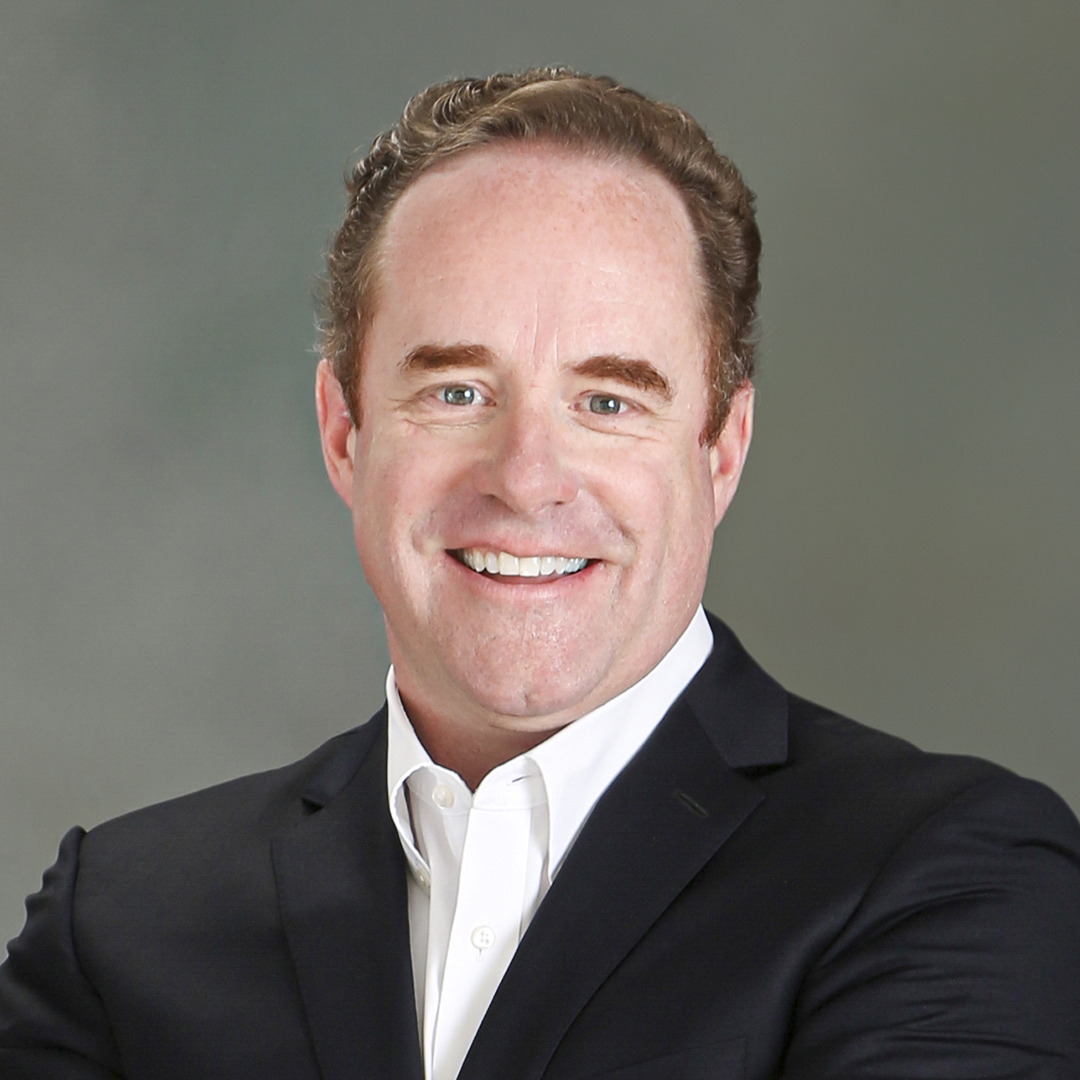|
Getting your Trinity Audio player ready...
|
Neighborhoods composing Chicago’s West Side are home to nearly 500,000 people of the city’s 2.7 million population. Since the late nineteenth century, this area has been shaped by triumph and tragedy, serving as nesting grounds for thousands of immigrants from Russia, Poland, Ukraine, Italy, Mexico, and Greece; cutting the ribbon for new Green and Blue CTA lines, as well as a new University of Illinois campus; and becoming a hub for industrial markets and manufacturing plants like Sears, Roebuck and Company, Western Electric, and International Harvester.
By the late twentieth century, everything changed.
In the 1960s, during a time of great political unrest and racial divide, many white Chicagoans sold their homes and moved to suburbs. Companies quickly followed suit, either closing their doors for good or moving closer downtown or to suburbs nearby. With less work available, and no means of following jobs to suburban areas, poverty in westside neighborhoods skyrocketed, followed by increased crime and gang violence, and eventually leading to one of the country’s greatest racial disparities.
Among the aforementioned consequences, health inequity proves to be one of the most jarring in the twenty-first century: compared with the Loop downtown, the life expectancy of someone living less than six miles away in West Garfield Park drops from eighty-five to sixty-nine.

Nestled between the Near West and East Garfield Park neighborhoods sits Rush University Medical Center, a 644-bed hospital system that, understandably, never seems to settle down, welcoming thousands of employees, students, patients, and staff members through its doors each day.
Walking through the halls of Rush is very much like watching a high-speed video of a bustling intersection: each doctor, visitor, and patient moving perfectly in time with one another as they cross through hallways, over bridges connecting wings, and in and out of exam rooms. It’s a massive, lively organization that is uniquely positioned in the center of a historically unrepresented area of Chicago, giving it the onus to give back to its community by not only providing exceptional care but also supporting the area economically.
Jeremy Strong, Rush’s vice president of supply chain, has been with the organization for eighteen years, entering it as a student himself and working his way through different areas of hospital operations. In Strong’s position, driving the mission of Rush starts inside the hospital, redesigning ordering and product stocking processes to enhance patient care. To support Rush’s greater mission, however, Strong and his team have enacted a plan that affects a much wider scope than their department—a plan that solidifies Rush’s position as “an anchor in the west side.”
High Pace and Hands-On
When Strong moves through each department of Rush’s butterfly-shaped corridors, it’s clear that everyone knows him. And better yet, he knows everyone, too.
Every employee—regardless of their role—greets him as he walks by. A handshake from an emergency room technician, a wave from a member of the janitorial staff, a pat on the back from the director of supply chain, who works closely with Strong from several floors below to ensure the hospital runs smoothly. Each interaction is genuine—a product of Strong’s growth at the company during his tenure and of his inclusive, amiable leadership approach.
Strong joined Rush’s team in 2001 as part of its health systems management program—what he likens to an “MBA for healthcare.” His early work placed him in interventional areas of the hospital—mainly the OR and perioperative areas—managing data analytics and operations.
“It was pretty high pace,” Strong remembers. “It was really hands-on and behind the scenes, so I had a tremendous amount of physician engagement. Now I’m one of the few supply chain leaders that has the numbers of a lot of his surgical chiefs in my cell phone.”
In addition to helping with core operational tasks, like helping to design and set up new operating room spaces, Strong also helped largely with Rush’s integration of the EPIC OpTime software system and with moving key departments to the organization’s newest buildings. While all of these hands-on experiences allowed him to closely learn the ins and outs of the hospital system, Strong says the most important tool they gave him were the close-knit relationships.
“Those relationships and understanding of how clinical workflows work definitely help with supply chain—that knowledge is something that a lot of supply chain leaders miss,” Strong says. “They’re not used to other functions, but they assume how operations work and what workflows are important to the staff. But, if your advice doesn’t match the clinician’s workflow, the clinicians won’t be willing to comply with it.”
“How do we look at things differently and be more open? How do we talk to people differently? If we do, we can only go further.”
“Jeremy’s background is what sets him apart,” says Thad MacKrell, CEO of PAR Excellence Systems Inc. “He was steeped in clinical and business operations—both non-acute and special procedures—before assuming his current role of vice president of supply chain. This gives him an excellent perspective on what clinicians expect and deserve from a high performing supply chain, namely accuracy, professionalism, and a service orientation. As a long-term partner, we routinely bring our innovations in inventory management automation to Jeremy and his team first, to get their perspective and insights on how we can optimize our value in the broader market.”
The ability to relate to clinician workflows becomes ever more important within Strong’s effort to restructure Rush’s supply chain function to work more efficiently, cost-effectively, and with less waste, all while uniting three of Rush’s hospitals under a similar mission and strategy. Considering Rush’s size, this project is no small feat. But with buy-in from all members of the organization, accomplishing goals becomes a lot easier.
We Can Only Go Further
Strong’s mission to help revamp Rush’s supply chain started with two seemingly simple questions: how are we leveraging supply chain and what could we do better?
“How do we look at this more systematically and create some structures to put those new strategies in place?” Strong exemplifies. “It’s not easy because people are used to their own thinking—we can’t just change something and hope they don’t notice. You have to build confidence that you’ve thought about issues and how to better manage them.”
The opportunity to bring everyone, from physicians to executive leaders, onto the same page has helped tremendously in streamlining supply chain processes. In total, the ability to establish trust among key players in the organization enables Strong’s team to work more efficiently toward its goals.
One of Strong’s main objectives was to reduce the amount of backstock inventory that the hospital was accruing as a result of over-ordering.
“From a distribution standpoint, from manufacturer to hospital, a lot of inventory was floating around—it was very messy,” Strong says. A lot of the mess, he goes on to explain, was due to ineffective ordering practices: ordering things they didn’t need or that they didn’t necessarily use out of fear that they might need it. Distributors would come with a truckload of items, solely to be added to the pile of backstock that was already present.

“For surgical procedures they will bring a truckload of stuff, but 90 percent of the time our physicians only use a few key items,” Strong explains. “We had to be better indicators of what’s needed across all our services and assess how we could cut the rest out. Then, our distribution centers and manufacturers can offset some of those costs. Ultimately, it’s cutting costs out of the whole system, so it helps us to help them.”
Strong and his team also consider how they can create better supply routes to have fewer extra stops and less extra inventory and use technology to create better forecasts of orders.
Robots, for instance, are used to carry items throughout the hospital, from medical supplies to linens to garbage. Their one-track minds allow items to be delivered accurately and on a set schedule, so physicians always have what they need. Moreover, each product in Rush’s inventory—sutures, lotion, bandages, and so on—are loaded on PAR Excellence scales, which automatically reorder items based on their weights to avoid human-error with ordering.
Restructuring ordering practices is only one piece of the puzzle. Strong also looks at the correlation between product price and patient care. He uses the example of implants for surgical procedures.
“If you look at just the price of a product, you’re not looking at the patient’s recovery or length of stay,” Strong says. “We’re looking at the total cost of that encounter. So, if a product demonstrates that it actually reduces length of stay or blood loss or complications, and you can look at the big picture cost, it makes sense to opt for an implant that might cost more but discharges a patient a day early.
“We’re aiming to be more predictive instead of reactive,” he continues. “How do we look at things differently and be more open? How do we talk to people differently? If we do, we can only go further.”
Moving in the Right Direction
The ability to consider the bigger picture with every project allows Strong’s supply chain team to extend beyond Rush’s walls. As part of a group called West Side United, Rush partners with six other hospital systems, in addition to several other companies, to increase social, economic, and environmental vitality within Chicago’s West Side.
A growing body of medical evidence shows that the root causes of many chronic diseases are the socioeconomic. Rush’s efforts to keep people healthy involves not only doctors and nurses but also executives like Strong who focus Rush’s economic leverage—how it hires, purchases, and invests—locally to improve the economic health of the communities it serves.
Rush has hired several hundred employees from Chicago’s West Side, redirected millions in spending locally, and has committed $6 million from its general investment funds to loans for small businesses typically excluded from the financial services sector
For Strong, being part of the “Anchor Mission” means thinking about the ways that Rush can make a difference for people who are already living in their community rather than getting new people to move in.
“So, an example of what we’ve done is that we created a new distribution agreement,” Strong notes. “We opened a distribution site about a mile away with a new distribution partner. They have contracted to hire 70 percent of their staff from neighborhoods in the West Side, which creates jobs and gives us a distribution center close to us. It’s good for us and the community.”
Among other efforts, Rush also restructured its food court contracts to include restaurants from the West Side. The cafeteria-style food hall features three resident restaurants and two rotating vendors: Angel’s and La Lagartija Mexican cuisine, The Ogden and Park Tavern bar and grill, Pompei Italian cuisine, and several restaurants from Greektown are among the options available.
Strong says the reaction from the community has been especially rewarding. “People there are passionate about what they do and understand how much of an impact something like this has.”
And while Rush’s effort has only begun to show its neighborhood, and those around it, their true potential, its commitment alone proves that it’s easier to step in the right direction when we all move together.

